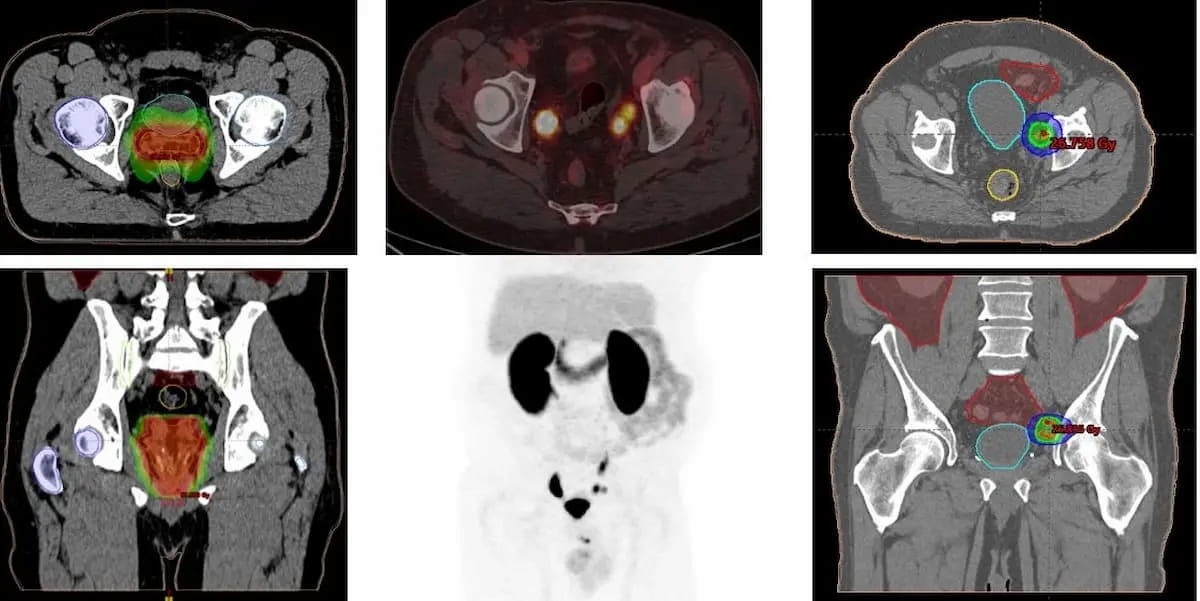Emerging PET/CT Agent Shows Promise in Detecting PCa Recurrence in Patients with Low PSA Levels
18F-DCFPyL facilitated detection of recurrent prostate cancer in 51 percent of patients with PSA levels ranging between 0.2 to 0.5 ng/ml, according to new research presented at the American Society of Clinical Oncology Genitourinary Cancers (ASCO-GU) Symposium.
New research suggests the positron emission tomography/computed tomography (PET/CT) agent 18F-DCFPyL may be advantageous in diagnosing early recurrence of prostate cancer (PCa) in patients with low prostate-specific antigen (PSA) levels.
In a retrospective study recently presented at American Society of Clinical Oncology Genitourinary Cancers (ASCO-GU) Symposium, researchers reviewed 18F-DCFPyL (Pylarify, Lantheus) PET/CT data for 129 patients, including 93 patients with PSA levels 0.2 < 0.5 ng/ml and 36 patients with PSA levels ranging between .05 and 0.2 ng/ml. Reviewers also used the adjunctive Prostate Cancer Molecular Imaging Standardized Evaluation (aPROMISE) platform, according to the study.
New research suggests the use of the PET/CT agent 18F DCFPyL (shown above) may enable early detection of prostate cancer recurrence in patients with PSA levels below 0.5 ng/ml. (Images courtesy of the Society for Nuclear Medicine and Molecular Imaging.)

The study authors found that 18F-DCFPyL enabled detection of recurrent PCa in 51 percent of patients (47/93) with 0.2 to 0.5 ng/ml PSA levels and in 36 percent of men (13/36) with .05 to 0.2 ng/ml PSA levels.
“18F-DCFPyL PET/CT demonstrates high detection rate for recurrent prostate cancer even in patients with minimally detectable PSA levels, highlighting its potential as a valuable tool in early identification of metastatic disease,” wrote lead study author Ida Sonni, M.D., a project scientist affiliated with the Department of Radiology at the University of California, Los Angeles (UCLA), and colleagues.
The use of 18F-DCFPyL also revealed a combination of lymph node and bone metastasis in 33 percent of the patients with .05 < 0.2 ng/ml PSA levels and 42 percent of cases in men with 0.2 < 0.5 ng/ml PSA levels, according to the study authors.
“These findings suggest that current thresholds for initiating PSMA PET/CT imaging in (biochemical recurrence) patients may need reconsideration to optimize early detection and subsequent clinical management,” noted Sonni and colleagues. “Further studies are necessary to refine guidelines and assess the cost-effectiveness of incorporating PSMA imaging at very low PSA levels.”
Reference
1. Sonni I, Nickols NG, Niknam K, Schaffer D, Berenji G, Rettig M. Early detection of recurrent prostate cancer using 18F-DCFPyL PET/CT in patients with minimal PSA levels. Presented at the American Society of Clinical Oncology Genitourinary Cancers (ASCO-GU) Symposium, February 13-15, 2025, San Francisco, Calif. Available at: https://conferences.asco.org/gu/abstracts-posters .
New bpMRI Study Suggests AI Offers Comparable Results to Radiologists for PCa Detection
April 15th 2025Demonstrating no significant difference with radiologist detection of clinically significant prostate cancer (csPCa), a biparametric MRI-based AI model provided an 88.4 percent sensitivity rate in a recent study.
The Reading Room Podcast: Current Perspectives on the Updated Appropriate Use Criteria for Brain PET
March 18th 2025In a new podcast, Satoshi Minoshima, M.D., Ph.D., and James Williams, Ph.D., share their insights on the recently updated appropriate use criteria for amyloid PET and tau PET in patients with mild cognitive impairment.
GE HealthCare Debuts AI-Powered Cardiac CT Device at ACC Conference
April 1st 2025Featuring enhanced low-dose image quality with motion-free images, the Revolution Vibe CT system reportedly facilitates improved diagnostic clarity for patients with conditions ranging from in-stent restenosis to atrial fibrillation.
Expanded FDA Approval Allows Use of Pluvicto Prior to Chemotherapy in Patients with mCRPC
March 28th 2025Recent research demonstrated a 59 percent reduced risk of progression or death with the radioligand therapy Pluvicto in comparison to a change of androgen receptor pathway inhibitor (ARPI) for patients with metastatic castration-resistant prostate cancer (mCRPC).